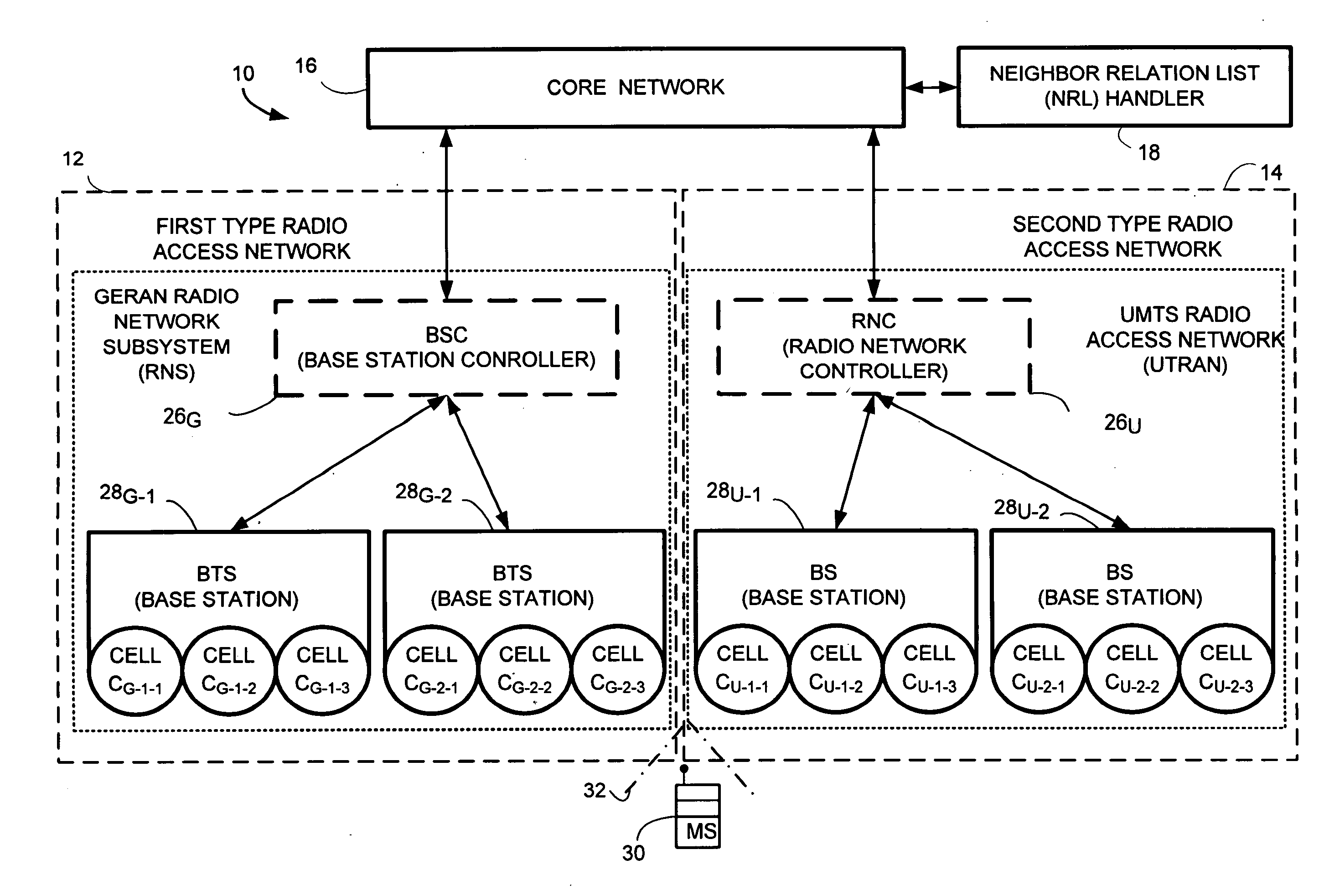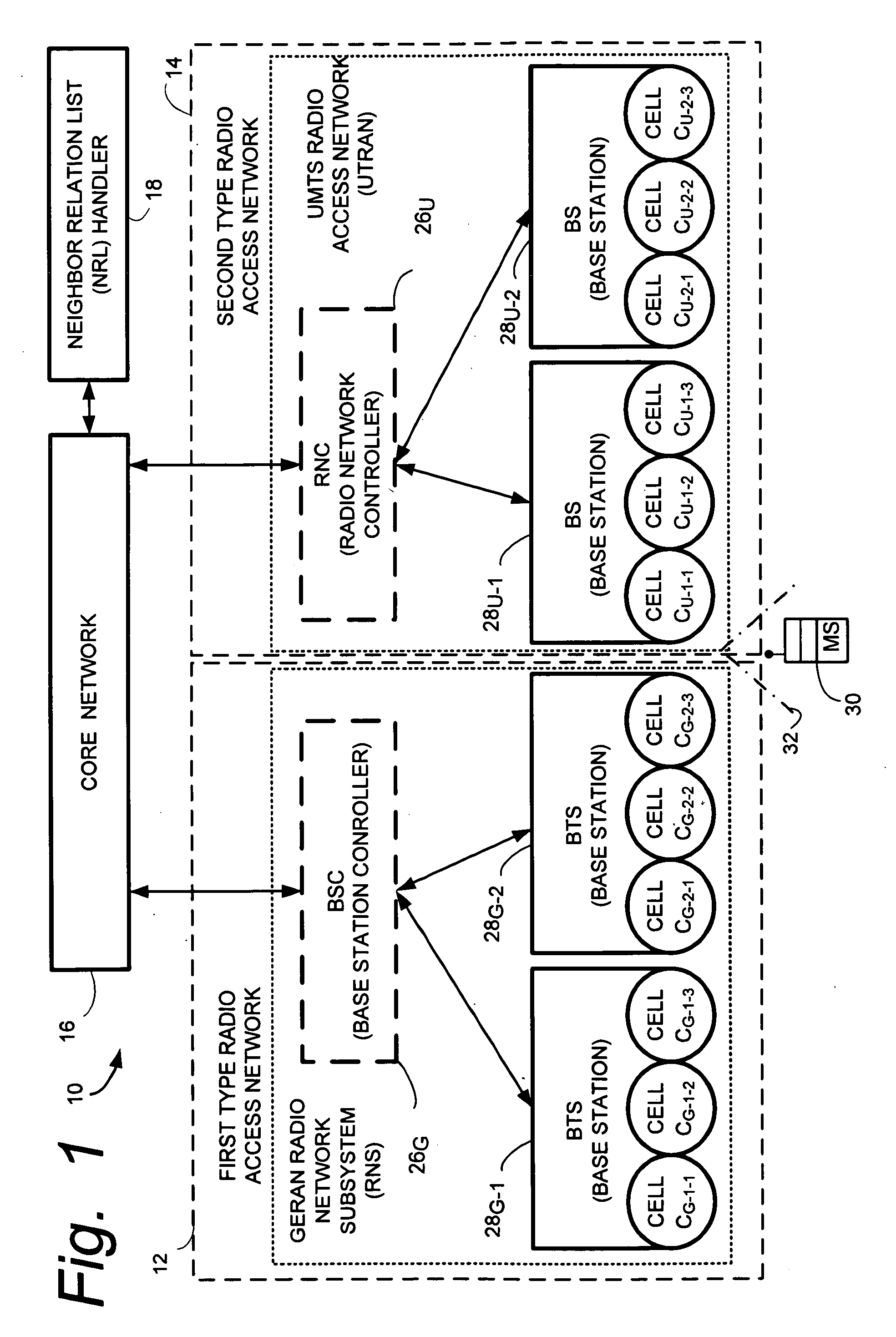Inter-rat/ frequency automatic neighbor relation list management
a technology of neighbor relation and frequency, applied in the field of telecommunications, can solve the problems of not being able to solve the problem of establishing neighbor relation lists for different rat/frequencies, consuming a lot of resources, so as to reduce operator expenses
- Summary
- Abstract
- Description
- Claims
- Application Information
AI Technical Summary
Benefits of technology
Problems solved by technology
Method used
Image
Examples
first embodiment
3.1 FIRST EMBODIMENT / MODE (METHOD A)
[0091]In a first example embodiment and mode, also known as “method a” or “solution a” and illustrated in FIG. 7, the serving base station (BS) issues a transmission gap of length T, where T is the worst case time to obtain the desired information from the candidate base station (BS). During this gap the mobile station (MS) measures the desired information. Note, this solution requires that the serving base station (BS) be aware of the worst case time T.
[0092]As a variation of the first example embodiment and mode, also known as “method d” or “solution d”, the mobile station (MS) informs the base station (BS) that it will measure during a reading gap of length T. The serving base station (BS) creates a transmission gap during this period. This method is a subset of method a), however, in this case the mobile station (MS) initiates the transmission gap.
second embodiment
3.2 SECOND EMBODIMENT / MODE (METHOD B)
[0093]In a second example embodiment and mode, also known as “method b” or “solution b” and illustrated in FIG. 8, the serving base station (BS) starts a transmission gap right after transmitting the measurement request to the mobile station (MS). During this gap, the mobile station (MS) measures the desired information. The transmission gap ends as soon as the serving base station (BS) receives the measurement result from the mobile station (MS). The gap will have the maximum length T, where T is the worst case time to obtain the desired information. In contrast to solution a), the length of T must not be known in advance.
[0094]As a variation of the second example embodiment and mode, also known as “method e” or “solution e”, the mobile station (MS) starts a reading gap right after sending a transmission gap message to the serving base station (BS). The base station (BS) issues a transmission gap that ends as soon as the base station (BS) receiv...
third embodiment
3.3 THIRD EMBODIMENT / MODE (METHOD C)
[0095]In a third example embodiment and mode, also known as “method c” or “solution c” and illustrated in FIG. 9, the serving base station (BS) issues periodic transmission gaps of fixed length where the mobile station (MS) measures the desired information. Assume that the desired information is transmitted periodically. Under certain conditions the transmission gaps will slide relatively to the broadcast frames for the desired information and eventually align with one of these broadcast frames.
PUM
 Login to View More
Login to View More Abstract
Description
Claims
Application Information
 Login to View More
Login to View More - R&D
- Intellectual Property
- Life Sciences
- Materials
- Tech Scout
- Unparalleled Data Quality
- Higher Quality Content
- 60% Fewer Hallucinations
Browse by: Latest US Patents, China's latest patents, Technical Efficacy Thesaurus, Application Domain, Technology Topic, Popular Technical Reports.
© 2025 PatSnap. All rights reserved.Legal|Privacy policy|Modern Slavery Act Transparency Statement|Sitemap|About US| Contact US: help@patsnap.com



